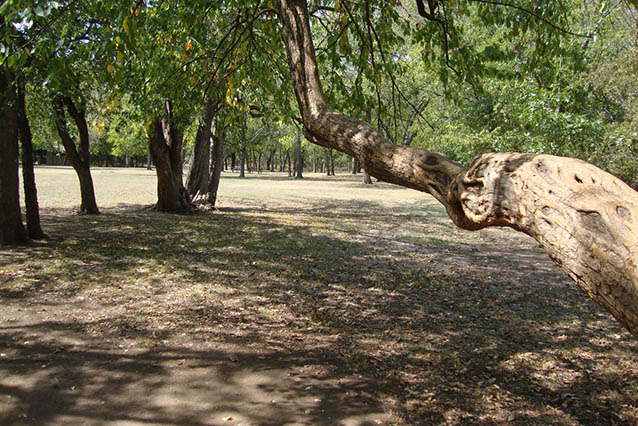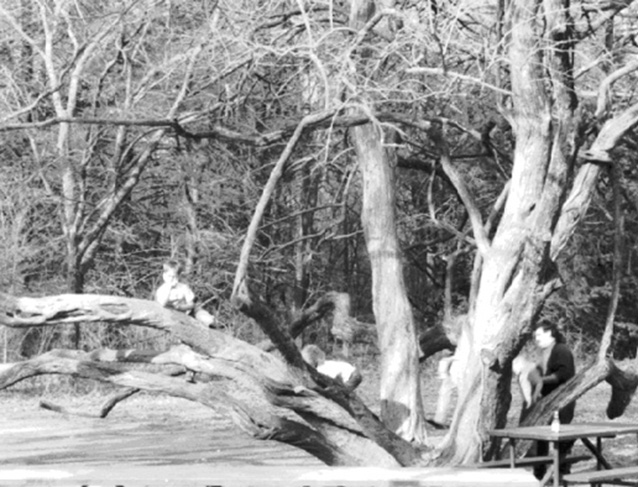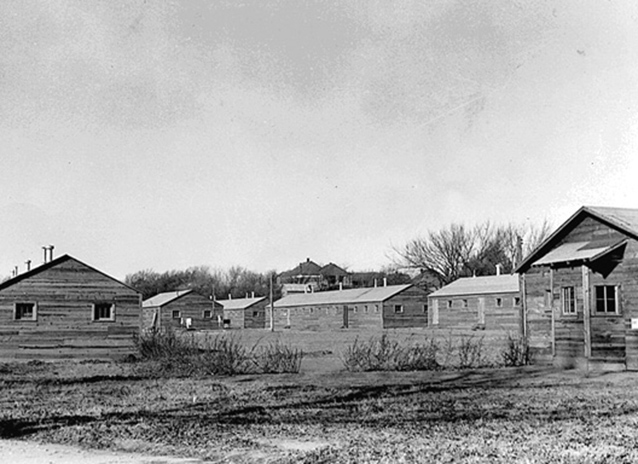Walnut Grove is located in the western half of the Platt National Park National Historic Landmark District, in the Chickasaw National Recreation Area, Oklahoma. It is just west of Black Sulphur Springs, along the north side of the park’s Perimeter Road. The nearly 25-acre landscape is primarily used as a picnic area. To the north and west, a wooded hillside leads up to a residential part of the town of Sulphur.
Walnut Grove is specifically associated with the design and construction of Platt National Park as the site where CCC construction crews lived from 1934-1940 while they were constructing the other features of the park.

NPS
The open, grassy play area, cool shade in the hot summers, and numerous picnic areas draw families and groups to the area. Walnut Grove is presently used mostly for picnicking, and an open lawn area is occasionally used for volleyball, frisbee, horseshoes, and other activities such as children’s games and an annual Easter egg hunt. Access to Walnut Grove is provided from a few parking areas that are located along the Perimeter Road, and a modern comfort station is also located conveniently nearby the picnic areas.
Historically, the area was the site of the camp for the Civilian Conservation Corps (CCC) Camp 808 from 1934 to 1940. Few elements remain from the CCC era, since the elements of the camp were never meant to be permanent features. Rather, the camp facilities were meant to be temporary, lasting only until the CCC crews were finished with their projects. The site of the CCC camp was intended to be redeveloped, and the existing conditions of the area as a picnic grounds reflects that intention. Today, the only remaining features from the CCC camp are four open stone fireplaces and remnants of a tennis court.

NPS
Walnut Grove is significant for its relationship to the former Platt National Park (a National Historic Landmark District), which is now encompassed within Chickasaw National Recreation Area. The district is significant for its association with the development of national park landscapes completed during the Great Depression and funded as part of Franklin Delano Roosevelt’s “New Deal” programs.
The area is also significant for embodying the characteristics of the type, period, and methods of construction typical of the “rustic style” of park design developed by the National Park Service in the years between World War I and World War II (1916-1942) under the leadership of Thomas Vint. In general terms, Rustic park design limited development to preserve natural scenery and designed buildings and structures in keeping and in harmony with the natural landscape. This meant using hand craftsmanship, local architectural styles and natural materials such as stone, wood and native plants in the design of each park structure or element.

NPS
The district exemplifies all of these aspects of National Park Service development, planning and design. Most of the district’s extant features were constructed by Company 808 of the CCC, one of the largest CCC camps in Oklahoma, between ca. 1930 and 1940. As the site where Company 808 lived, Walnut Grove is specifically associated with the design and construction of Platt National Park. Though few of the elements and features present on the site during the CCC camp’s tenure are extant today, the site is still strongly associated with their presence.
Quick Facts
- Cultural Landscape Type: Designed
- National Register Significance Level: National
- National Register Significance Criteria: A, C
- National Historic Landmark
- Period of Significance: 1933-1940
Landscape Links
Part of a series of articles titled Cultural Landscapes of Chickasaw National Recreation Area.
Last updated: December 30, 2019
